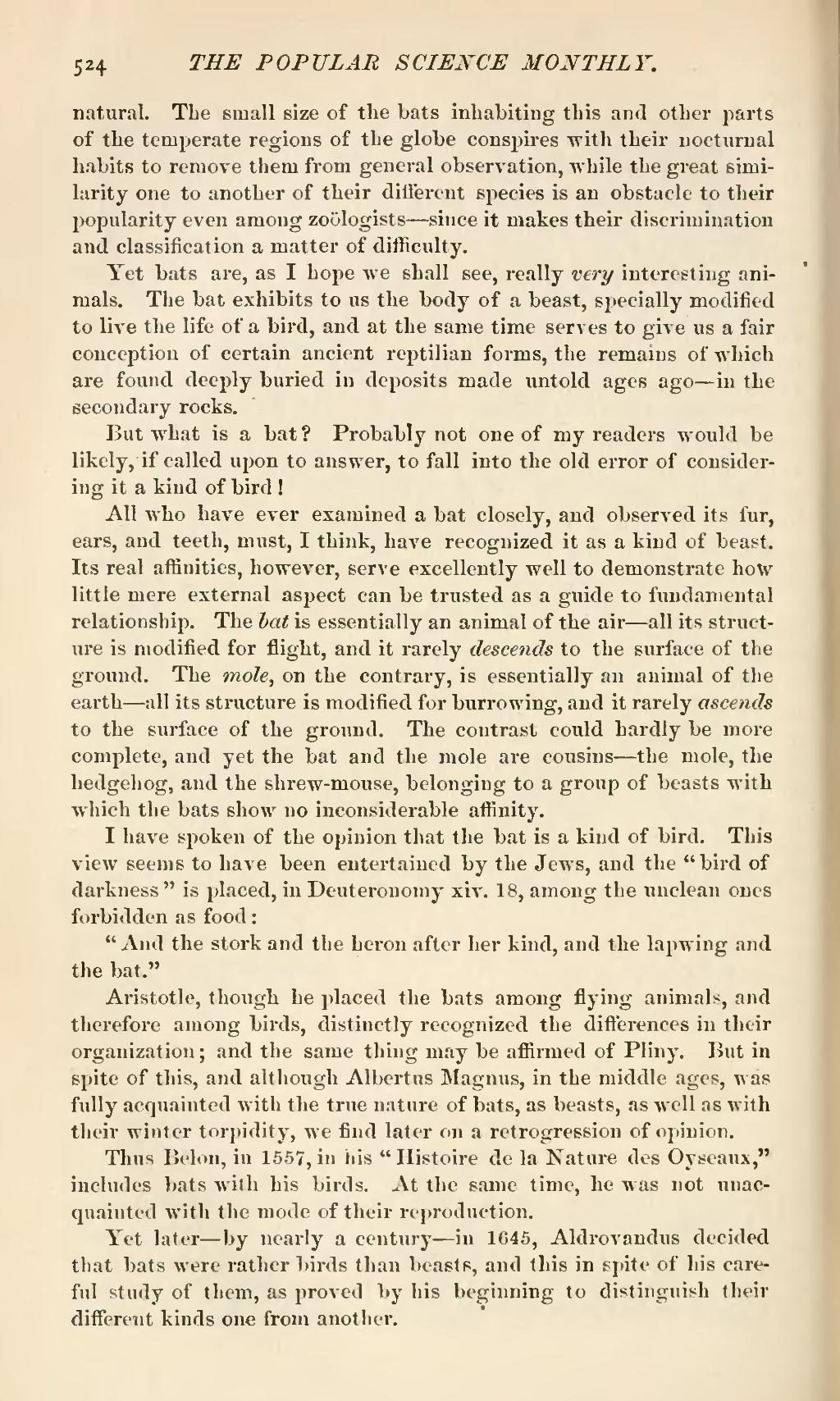natural. The small size of the bats inhabiting this and other parts of the temperate regions of the globe conspires with their nocturnal habits to remove them from general observation, while the great similarity one to another of their different species is an obstacle to their popularity even among zoölogists—since it makes their discrimination and classification a matter of difficulty.
Yet bats are, as I hope we shall see, really very interesting animals. The bat exhibits to us the body of a beast, specially modified to live the life of a bird, and at the same time serves to give us a fair conception of certain ancient reptilian forms, the remains of which are found deeply buried in deposits made untold ages ago—in the secondary rocks.
But what is a bat? Probably not one of my readers would be likely, if called upon to answer, to fall into the old error of considering it a kind of bird!
All who have ever examined a bat closely, and observed its fur, ears, and teeth, must, I think, have recognized it as a kind of beast. Its real affinities, however, serve excellently well to demonstrate how little mere external aspect can be trusted as a guide to fundamental relationship. The bat is essentially an animal of the air—all its structure is modified for flight, and it rarely descends to the surface of the ground. The mole, on the contrary, is essentially an animal of the earth—all its structure is modified for burrowing, and it rarely ascends to the surface of the ground. The contrast could hardly be more complete, and yet the bat and the mole are cousins—the mole, the hedgehog, and the shrew-mouse, belonging to a group of beasts with which the bats show no inconsiderable affinity.
I have spoken of the opinion that the bat is a kind of bird. This view seems to have been entertained by the Jews, and the "bird of darkness" is placed, in Deuteronomy xiv. 18, among the unclean ones forbidden as food:
"And the stork and the heron after her kind, and the lapwing and the bat."
Aristotle, though he placed the bats among flying animals, and therefore among birds, distinctly recognized the differences in their organization; and the same thing may be affirmed of Pliny. But in spite of this, and although Albertus Magnus, in the middle ages, was fully acquainted with the true nature of bats, as beasts, as well as with their winter torpidity, we find later on a retrogression of opinion.
Thus Belon, in 1557, in his "Histoire de la Nature des Oyseaux," includes bats with his birds. At the same time, he was not unacquainted with the mode of their reproduction.
Yet later—by nearly a century—in 1645, Aldrovandus decided that bats were rather birds than beasts, and this in spite of his careful study of them, as proved by his beginning to distinguish their different kinds one from another.

